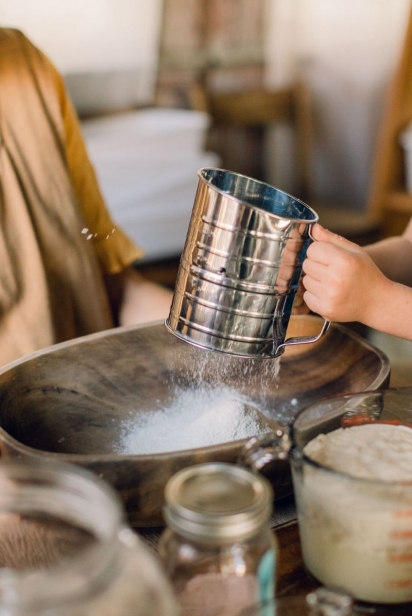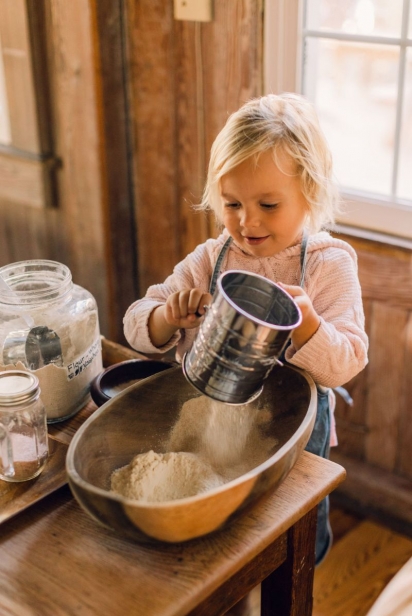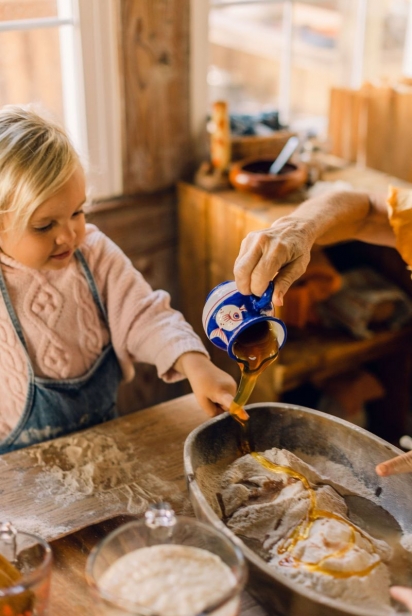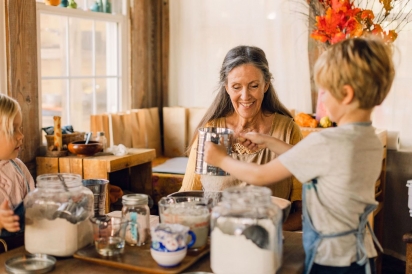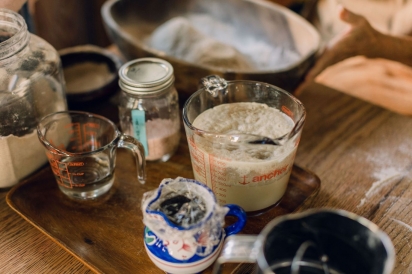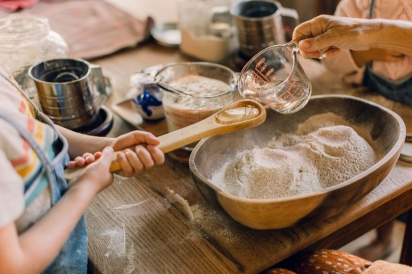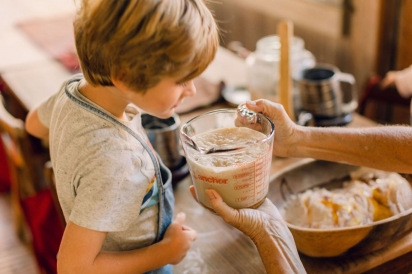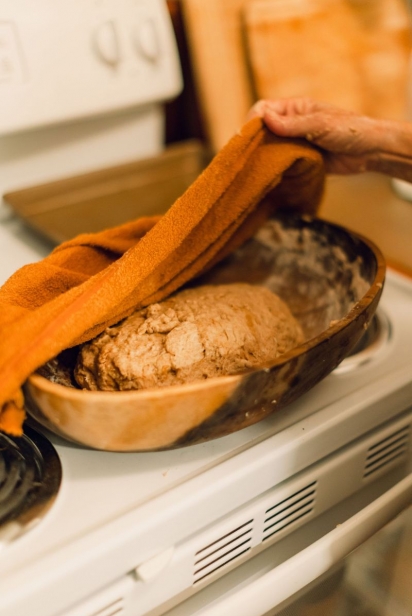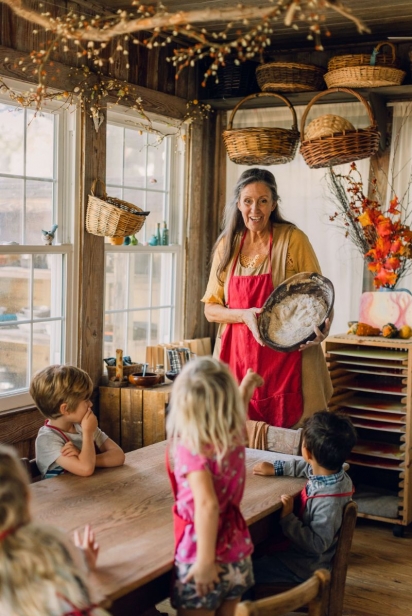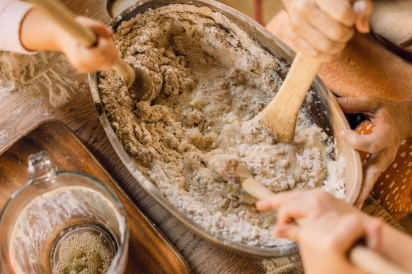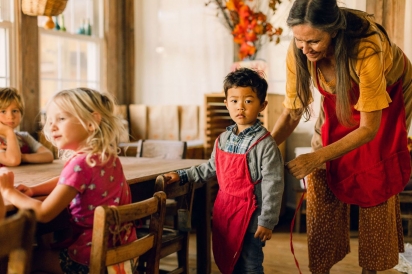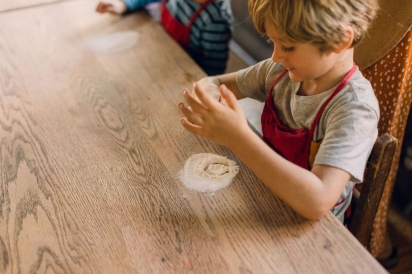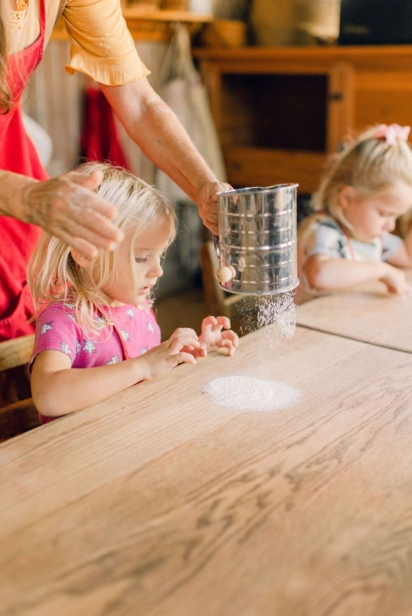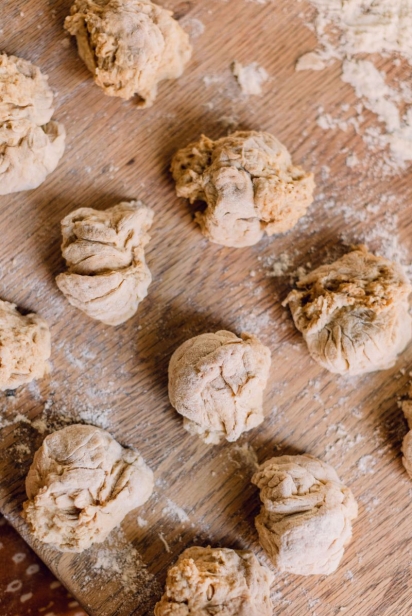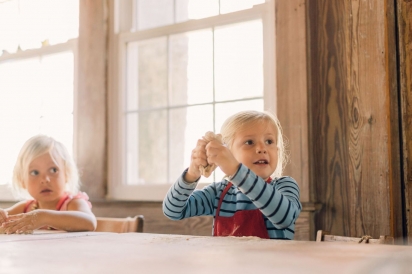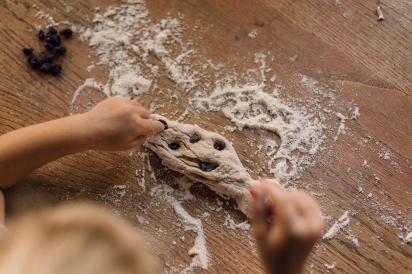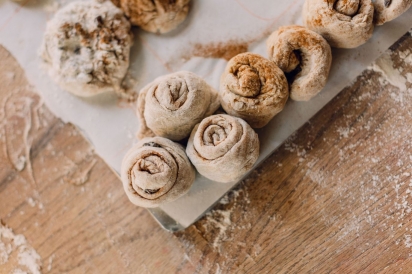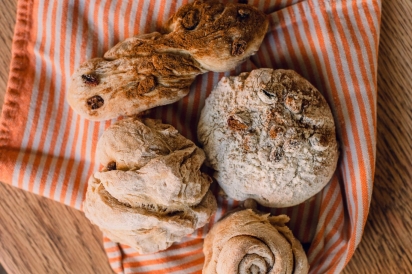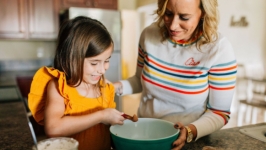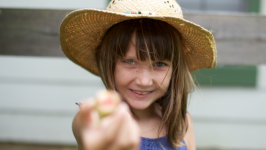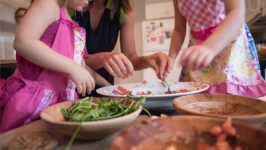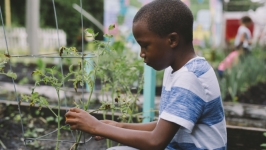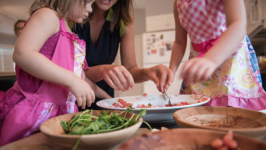Kids in the Kitchen: Bread Baked in(to) the Classroom
Just blocks from the sand in Jacksonville Beach sits a cottage and a little yellow beach house where you can often catch the smell of fresh-baked bread. The space is home to The Playgarden by the Sea, a Waldorf-based preschool and kindergarten where bread baking is part of the curriculum.
Bread baking has long been a part of the Waldorf education, a philosophy founded by Rudolf Steiner in 1919. And, back in 1995, it was bread baking that brought the founders of The Playgarden together. “As the story goes, a small group of young mothers started a playgroup inspired by Waldorf principles. After reading an article about the group baking bread together, people started calling to ask how they could join,” says Laura Cruz, executive director of The Playgarden by the Sea. “The group eventually grew into what is now The Playgarden by the Sea, which is celebrating its 27th anniversary.”
Students anticipate taking part in baking what they call huck-a-buck bread each week. Their teacher, Miss Adana, gathers the ingredients for the bread and covers them with a linen cloth on the table. As she pulls the cloth off, the children’s eyes light up, recognizing the familiar ingredients.
Each child takes a turn scooping flour into a sifter, holding it over a large wooden bowl and cranking the flour through as they count each cup. They feel the pink salt in their fingers as they add it to the dough. The sensory element of touching and smelling each ingredient is a focus at The Playgarden, as is the building of life skills such as baking and setting the table.
Students take turns holding a spoon over the mountains of flour, measuring melted coconut oil one tablespoon at a time. They appreciate the fragrant smell as they watch the oil crawl down the flour mountain like lava. They thank the bees as they pour the honey in and hold a finger out for a drizzle of honey to taste. The last ingredient, yeast, harnesses the power of the “yeast fairies.” Miss Adana pours it in, flooding the bowl and the room with excitement. After the dough is stirred, it’s covered with a cloth to let the yeast fairies do their job while children return to their play.
After the dough has risen, Miss Adana stands at the top of the cottage steps and begins to sing, “my mother and father went up to bed. They left me downstairs to make huck-a-buck bread...” The children hurry from all over the play yard to the steps, ready to see what magic the yeast fairies have performed.
Inside, Miss Adana pulls the cloth from the bowl to reveal the dough. She sifts some flour on top and says, “let’s see if the yeast fairies came.” As she slaps her hand into the dough, the class squeals with excitement. Each child gets a sprinkle of flour and a section of dough to knead. They push and pull the dough, singing as they knead. Raisins and cinnamon are added to their dough at the end and the shaped loaves are placed into the oven. Each child cleans the table and hangs their apron up for the next huck-a-buck day.
When the bread comes out of the oven, the children can smell the sweet raisins and cinnamon before they catch sight of the loaves. The loaves are still warm as the kids greet their grown-ups on the porch at pickup time and they open their brown bags, proud of their day’s work. “Never do for a child what a child can do for themselves” is a foundational principle at the school, and results in children building great confidence in their abilities and, for now, slightly tough bread loaves. But each week brings the same magic in the process and the same sweet smells pouring out of the cottage by the sea.



